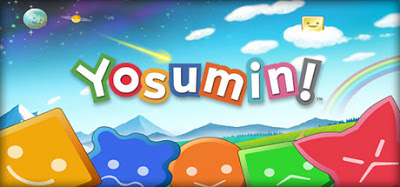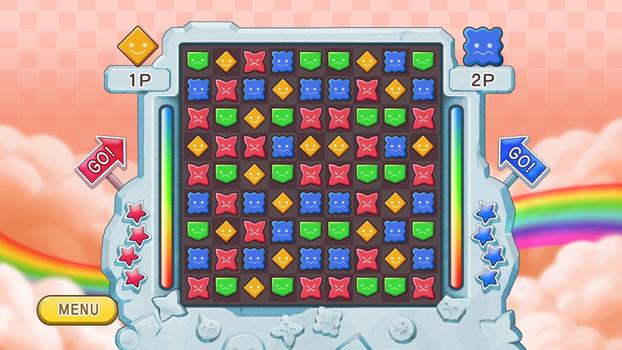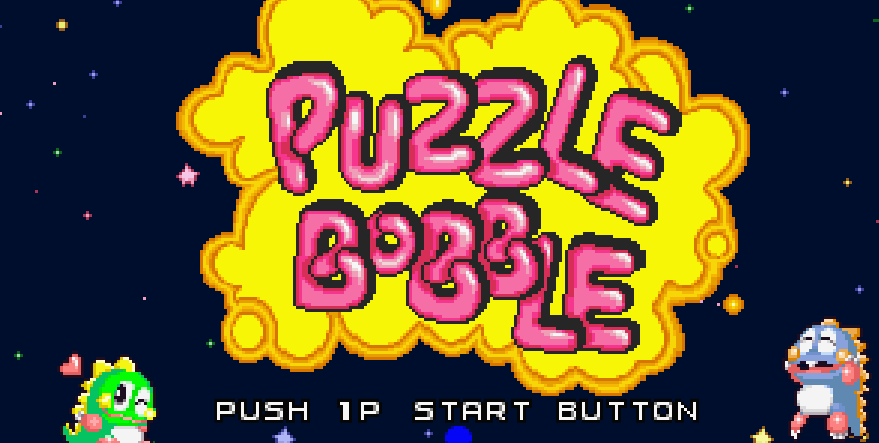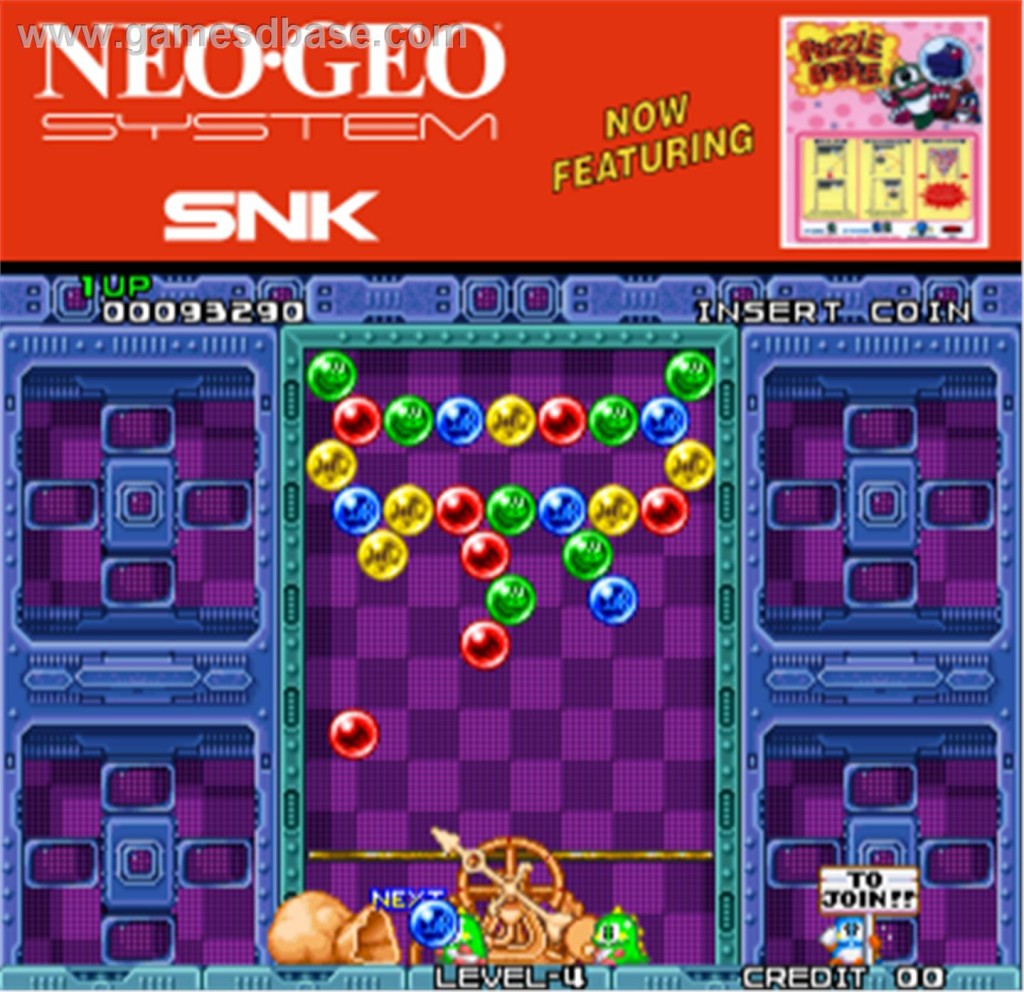Who knows why, but I really had a hankering for some puzzle games this weekend. Apparently Steam calls them “casual games” due to the PopCap dominance in the United States, but us old fogies see them as “puzzle games” still. They’re one of the first genres ever created, as they stick close to the format of board games with a computer-rules based twist. They’re very accessible, challenging, and fun in abstraction without all that bluffery about graphics and such (though cute graphics and music help!) Let’s look at some, shall we?
Yosumin! – Who knew that Square-Enix made puzzle games all of a sudden? I’m guessing they hoped to cash-in on a popular market, but they made a respectable game in its own right. Yosumin! (yes, the exclamation mark MUST be used) requires the played to create squares and rectangles with one of six shapes. This is hard to describe without an actual image attached, so let me help you see it:
Take a look at this multiplayer mode screen (only available in the Xbox 360 version). You’ll note a few of the different shapes/colors, and two bars on each side. The bar shows you how much time remains before you’re kicked out of the game; this applies equally to single or multi-player. In the middle, you must make rectangles and square by either selecting one shape and then the other diagonally across from it, or by clicking and dragging around the desired rectangle. There’s plenty of such configurations to make in the screen above, so you can actually get a basic idea of the flow just from this screenshot. You must make squares which have the same four shapes on each corner, or it doesn’t work.
The time limit adds constraints to this; otherwise, we’d be looking at a PopCap classic. In this case, all versions of the game feel like a frantic race of pattern recognition. Sometimes, you need to sacrifice smaller squares for bigger ones. Anytime you make a square, new pieces pop right back into place, so the game constantly flows. Special shapes can change the boards in various ways if they lay inside the square you clear, from increasing the time remaining to making the whole board one shape and color.
Honestly, I have not played a game like this in a long time, but the PC version’s story mode eases you into the game rather nicely. It forces you to make different kinds of squares – big ones, small ones, ones that exceed twenty shapes, ones less than eight, and the rare Yosumin! (clearing the whole board with one square, much like the titular Tetris demonstrates the game’s highest scoring move). Clearing a certian number of the same color/shape squares in a row clears the board into easy shapes as well, lending even more strategy for a high score. Eventually, you’ll juggle negative and positive special pieces alike while planning ahead and reacting accordingly. Chain a few together and it makes for a higher score, so look for that often. Once it starts adding movable pieces and gigantic size pieces (which must be broken up by creating a rectangle on top of it), it becomes more and more complicated.
Frankly, I’m surprised this game slipped under the radar; its increasingly complexity might have something to do with it. I honestly heard of it once before, but Square-Enix rarely dips their toes outside of JRPG genre fare (barring their licensed products). It’s a pleasantly surprising, relaxing, and light-hearted little game worth your time and money (5.99 on Steam, and 2.00 during the Steam sale – you can’t go wrong with this). I’ll write a review at some point and see if the game holds up to closer scrutiny.
Puzzle Bobble – Otherwise known as “Bust-A-Move” nowadays (and I still don’t understand WHY), Puzzle Bobble falls into the line of its arcade puzzle-platformer predecessors. Does anyone remember Bubble Bobble? These games derivate off that template with the bubbles and all, but switch things up. Like most puzzle games, a cursory screenshot makes things much clearer than a text explanation:
You control the cursor on the bottom; this determines where you will launch the bubble. The next bubble should be fairly obvious. Basically, you want to line up three bubbles of the same color, making them pop. Bubble aren’t just straight shots; you can bank them off walls, and they will bounce until they hit the top of the screen (highly unlikely) or another bubble. The goal, as you might imagine, is to clear the screen. However, as a Neo Geo arcade game, there’s a strict time limit involved. Take too long, or make too many mistakes, and you’ll find yourself at a Game Over screen. Fitting for an arcade title, really.
The trick, then, is to clear the screen as fast as possible, which is entirely doable thanks to the way bubbles fall. You can just pop them, but if you pop the rows near the top, all other rows connected to those ones below it will immediately fall. Not only will this accumulate vast numbers of points, but it will also clear the screen quite quickly, making the prospect quite feasible. To do this, you will usually bank shots off the walls, and they make these shots very difficult; an arcade stick gives you the right precision, but it’s perfectly doable (if cheating a bit) with arrow keys. That’s the long and the short of Puzzle Bobble/Bust-A-Move’s first iteration.
Each level in the single-player (and the multiplayer as well) introduces new colors and new configurations to overcome. Each predetermined “puzzle” (har har) almost exists as a training tool multiplayer (as an arcade original, it would only make sense for that to be the case). Multiplayer simply challenges you to complete an ever-increasing number of bubbles before your opponent. Clearing on your side adds bubbles to their side, and the back-and-forth continues until someone fails. Like any game of this type, it’s a symmetrical system that gives both people the same tools in their head-to-head, meaning that bragging rights and victories are never unfair (except for your own time and experience playing the game).
Most sequels stick to the basic and successful formula, which retains just the right amount of actual skill and pattern recognition under time constraints, and plops new challenges and features on top. The series continues even after nearly two decades, far surpassing its own ancestors. With that in mind, I can’t recommend these games enough.
————————————————————————————————————————————————————————————————————————————
That’s it for this week’s Monday Update. Some actual articles coming your way!




